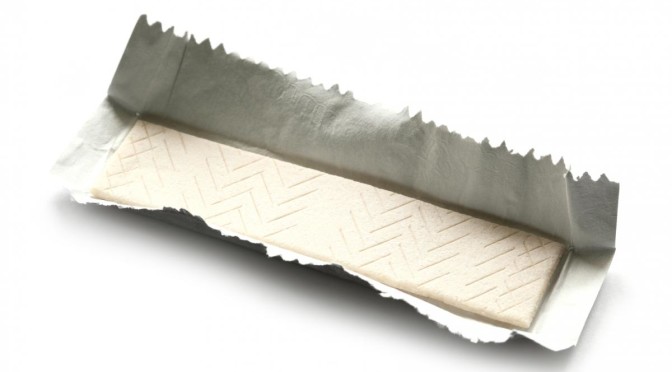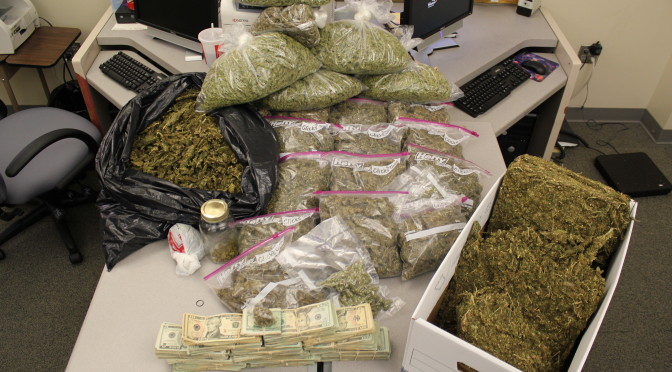Chewing and bubble gums are fancy and yummy delights which the world cannot do without. Most people do not pass a day without having one or two of them. From the littlest toddler to the oldest person alive, almost everyone knows what are they like and their taste. That’s not everything. The fact that they come coated in bright colors, multi-flavored, and cute shapes excite everyone, kids and adults alike. Gums are certified perennial hit in the worldwide market and they occupy a shelf in almost every store. They are found in jars in many homes and they are given as rewards in the kindergarten school. During Halloween, not a child goes home without gums in his treat or trick basket. In fact, there are even bubble gum blowing contests which have become one of the popular trends and fun activities of most people. If gums were martians, they would have invaded earth a long time ago. It’s unimaginable, but the gum phenomenon is true.
But while most people are busy chewing or blowing gums outdoors or indoors, how many of them really know the story behind them? Each time you put a gum or possibly gums in your mouth, do you ever wonder how they have turned out to be what they are now? There may be a few nods, yet most likely, majority of the answers is ‘no.’ That’s quite understandable. Besides, who ever thought more seriously about gums except on how to blow the largest balloon to beat records? But to set things straight, may be its time to know a few interesting facts about gums. Next time, at least, not only will you entertain and interest your colleagues by blowing large balloons, but also by sharing them a few words on how both chewing and bubble gums came to be.
It would be a good start to briefly differentiate between chewing and bubble gums. On one hand, the former are manufactured primarily for chewing purposes and are either made out of chicle, a kind of natural latex or other bases such as petroleum. On the other hand, the latter are specially created in order for people to be able to blow gum bubbles. While chewing gums went out in the market in the late 1840’s, bubble gums were to follow only after few decades.
The production of commercial gums traces back to the late 1840’s. Archeological researches, however, surprisingly reveal that the practice of chewing gum was already common during the ancient times. The ancient Greeks are believed to chew a tree substance called “mastiche” since it comes from the Mastic Tree of Turkish origin. Moreover, they used gums not only for enjoyment but for hygienic purposes such as cleaning their teeth and consequently refreshing their breath. In India, betel was already used for centuries. Then in Central America, the Maya Indians chewed a substance called “chicle” from the sapodilla tree. Finally, the American Indians made gums out of the resin from spruce trees or from beeswax. Obviously, the ancient gums were far different from the ones sold today. In place of the sweet taste, the many fruit flavors, and other gum luxuries people enjoy today, the early people made the most out of mastiche, spruce, beeswax, and other natural gums coming from trees, grasses, and plants.
It was in 1848 when the first commercial gums were manufactured. The Curtis brothers from Maine developed the first gum out of the resin from spruce tree. It was called “State of Maine Pure Spruce Gum.” Then in 1850’s they improved their gum recipe by using paraffin and by trying to put in some flavor. For this they established the Curtis Chewing Gum Factory.
In the 1870’s Thomas Adams, who was a photographer then also tried his luck into the gum business through the influence of Antonio Lopez de Santa Anna. He followed a different trend by making his own version of gum out of chicle. His business soon started to grow that he had to devise a gum making machine. Perhaps his remarkable contribution was his adding the flavor of licorice in his product called “Black Jack.”
Then in 1880’s, the brothers Henry and Frank Fleer embarked on their own gum recipe. While Henry introduced the sugar coated chicle and called it “Chiclet,” Frank attempted to invent the first bubble gum naming it “Blibber Blubber Bubble Gum.” Unfortunately, the latter concept was never released because of its stickiness. But an employee of their company had later discovered the secret behind making bubble gum.
During the same period, John Colgan thought of trying to put in a lasting flavor in gums. His ingenious idea left a revolutionary and lasting mark in the gum industry. In 1899, Franklin Canning, a dentist, developed a dental gum which he named “Dentyne.”
In 1914, Henry Fleer together with William Wrigley produced the popular “Wrigley Doublemint” which added both fruit and mint flavors to the chicle gum. While Henry’s brother Frank didn’t pursue his Blibber-Blubber project, an accountant of their company named Walter Diemer accidentally discovered the secret of making the real bubble gum. Diemer’s newly found recipe was an instant hit in the stores and so the Fleer Chewing Company proceeded in selling the first ever commercial bubble gum named “Dubble Bubble.”
Hence from that time onwards, chewing and bubble gums have continuously undergone series of changes and development in their recipes. Today, gum lovers worldwide can enjoy the many flavors, colors, and shapes of both chewing and bubble gums. Moreover, most gums now are made out of corn syrup, natural latex or plastic, flavorings, and softeners.
Since the initial release of gums in the market, their popularity has continued to increase. It is said that the physicians in the 1860’s discouraged their people from chewing gum because it would make their intestines stick all together. Well, it seems that gums have gone all the way through history to prove the opposite. Gums are still No. 1 among kids and adults.


